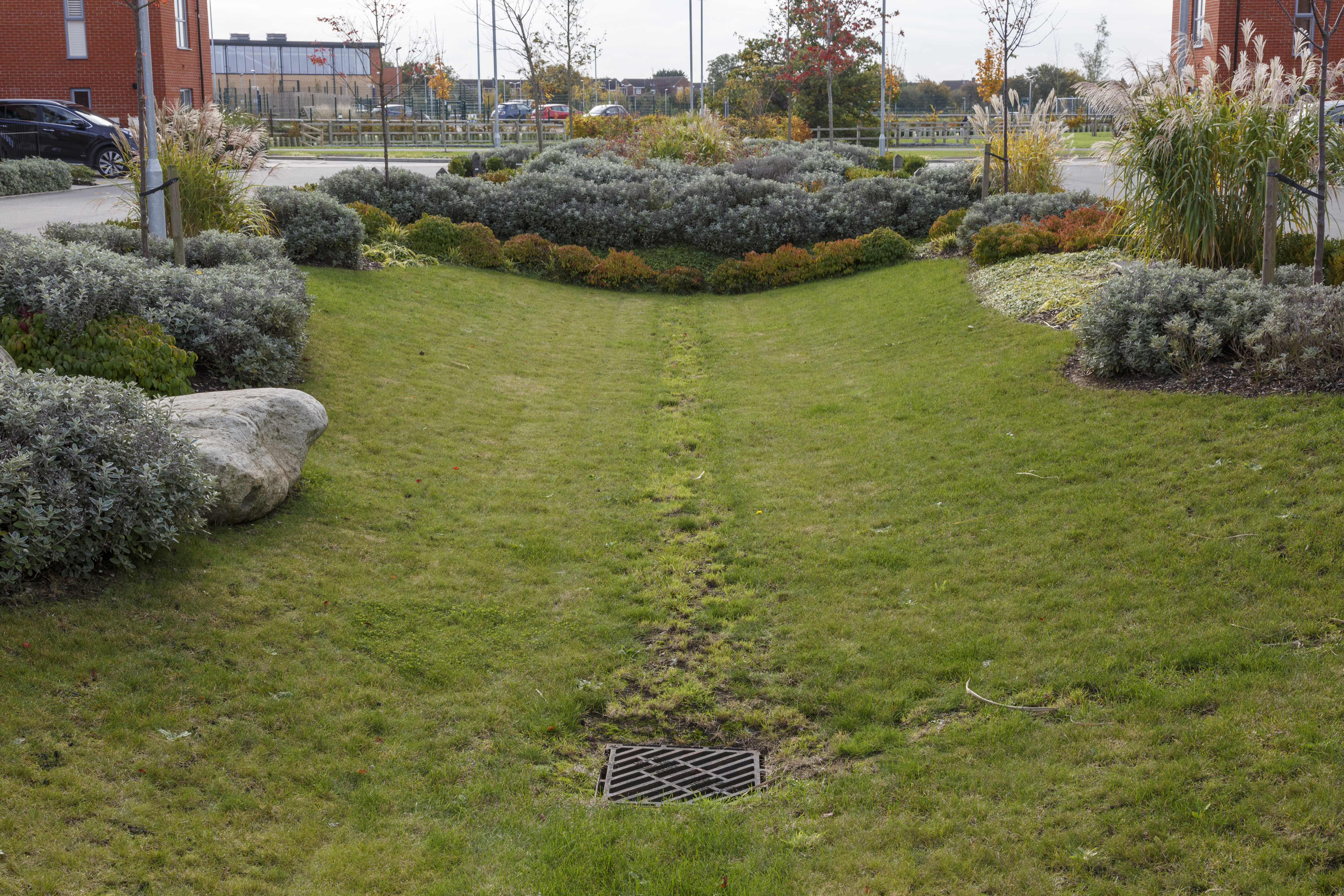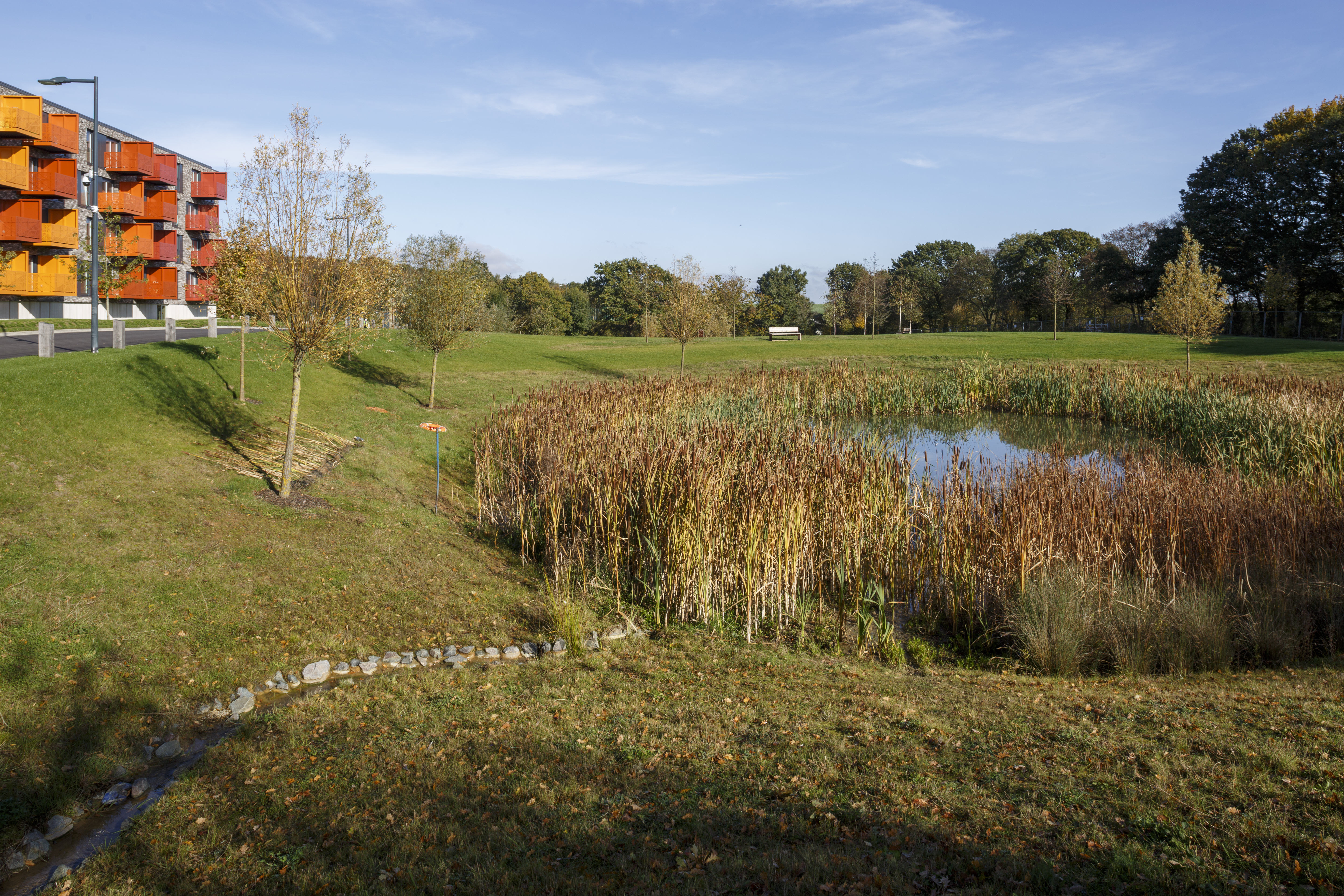Green Spaces and Biodiversity
The implementation of SuDS can greatly benefit green spaces and biodiversity and therefore should be used as much as feasibly possible.
SuDS can become even more advantageous in providing multi-functional benefits where they can deliver green infrastructure and support high quality development. Essex defines green infrastructure as being:
Made up of natural and semi-natural assets and habitat types, of green and blue spaces, and of other environmental features that maintain and enhance ecosystem services. It provides multi-functional benefits integral to the health and wellbeing of our communities and to the ecology and economy of the county. Green infrastructure is often referred to as a network of these natural and semi-natural assets and spaces, which are joined together connecting urban and rural areas and are habitually strategically planned.
Where relevant, we strongly recommend utilising the Essex Green Infrastructure Strategy as this will help in delivering in not only above ground green multifunctional spaces but also high quality development
Green infrastructure can contribute to making areas less vulnerable to flood risk whilst ensuring development doesn’t increase flood risk to third parties. Through its key role in:
- sustainable drainage,
- drought mitigation,
- flood and water stress reduction,
- providing opportunities for attenuation or infiltration that can help to recharge aquifers,
- maintaining levels in watercourses or other blue infrastructure features,
- influence water quality through limiting diffuse pollution in watercourses.
Using SuDS in the context of green infrastructure, especially the end design solutions offer opportunities to create:
- attractive amenity features with the development,
- provide for habitat and biodiversity enhancement,
- vegetated green open spaces,
- green and blue corridors; and
- deliver multi functions and benefits to a community (e.g. recreational opportunities, improve health and wellbeing and place making).
Place making recognises the character and distinctiveness of different locations and can provide the opportunity to use water management, in the case of SuDS to help deal with flood risks whilst integrating into and enhancing the landscape settings. Especially when natural flood management techniques are considered within the flood management schemes design.
Natural flood management involves techniques that aim to work with natural features and characteristics to manage the sources and pathways of flood waters, rather than through engineered process. These features can be incorporated into the attenuation volumes associated with the storage for a site. Techniques could include for example:
- The creation of water rain gardens
- Green roofs and walls
- Bioretention areas (i.e. Swales, infiltration trenches, ponds and wetlands)
- Coastal and estuary management (i.e. saltmarshes)
- Woodland creations and leaky dams
Effective SuDS management should incorporate green infrastructure to maximise the opportunity for flood management and to improve water quality in Essex by:
- Ensuring that SuDS and other urban natural flood management measures are linked into the overall green infrastructure network.
- Create SuDS which are appropriate to the distinctive local context which will enhance landscape character and quality.
- Seek to positively influence urban design and landscape value through provision of green space / blue corridors, vegetation and by integrating water into the built environment, while protecting and conserving the historic environment, and providing opportunities for biodiversity.
- Consider how the retained water from SuDS can be used for active and passive irrigation for urban plants and green spaces, for example by designing green corridors and street trees as stormwater planters.
- Encourage take up of small-scale urban drainage measures such as green roofs, green facades, rain gardens and ponds to be implemented on an individual level by households and businesses.
- Explore possibilities of returning arable land to woodland and grassland in mid and upper catchments to stabilise soils, reduce sediment and nutrient run-off and improve flood management.
- Use of SuDS and other urban flood management measures to be incorporated into new developments and into proposals to refurbish existing neighbourhoods.
- Design SuDS for wildlife and amenity (e.g. by planting native species, providing ponds, green space paths, implementing street/park furniture (i.e. benches, interpretation etc.) where appropriate).
- Natural barriers (e.g. planting) and appropriate side slopes should be introduced to help manage perceived safety risks. Safety fencing and restricting access should be a last resort and should be avoided to enhance biodiversity and amenity. Some third parties may have additional safety requirements for adoption purposes. When features are to be adopted please contact the appropriate third party as early on in the process as possible.
- Determine the suitability of SUDS for different soil
- Allow sufficient land take for SUDS when planning the site layout
- Ensure there is an operational and maintenance plan in place and explore funding mechanisms for the long-term management of SuDS and Green infrastructure.
Where appropriate and possible, educational signs and information boards should be implemented near SuDS features. Educating the homeowners and local public about the role of the SuDS features and the benefits they bring will provide a long-term approach in regard to increasing the chance that the maintenance and cleanliness of the features is upheld. For example, it may reduce the amount of litter and debris build-up which could end up blocking pipes and outlets.
Biodiversity Net Gain (BNG) was made mandatory for major development from 12th February 2024 and for small development from 2nd April 2024, under Schedule 7A of the Town and Country Planning Act 1990 (as inserted by Schedule 14 of the Environment Act 2021). BNG requires developers to ensure that natural habitats are enhanced, with a 10% increase in habitat value for wildlife compared with the pre-development baseline. While BNG delivery will not be limited exclusively to the use of SuDS, above ground SuDS features are an excellent way of meeting BNG requirements. The use of well-designed swales, ponds, bioretention areas, wetlands, and other green elements, will present opportunities for habitat creation and the introduction of green/blue corridors across a site. These benefits will be in addition to the water quality measures provided by these kinds of SuDS features.
Page updated: 4/04/2024

